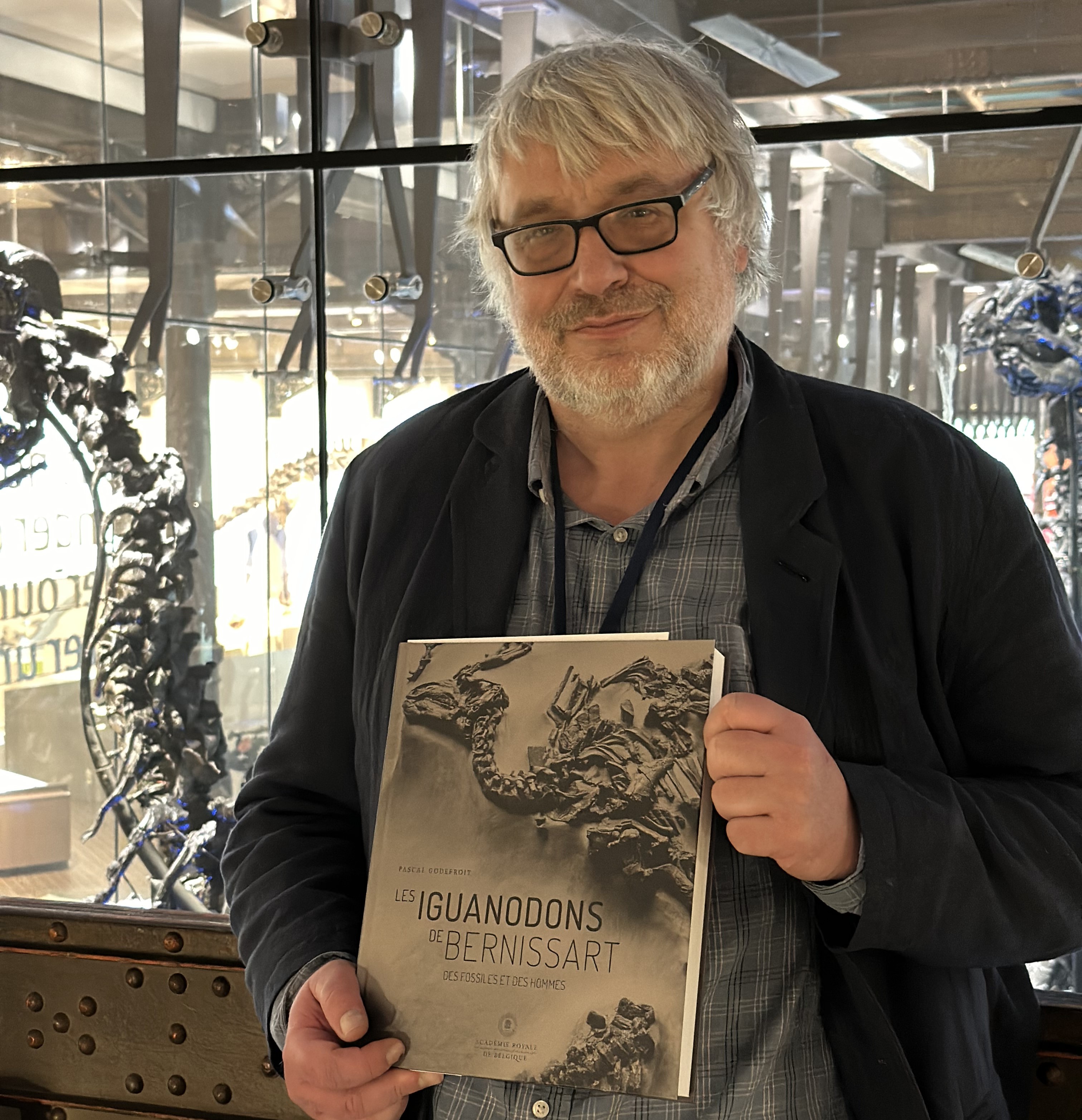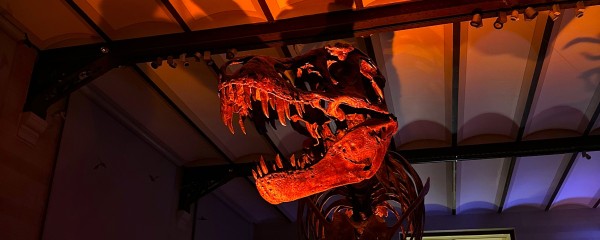New and richly illustrated book about the Bernissart Iguanodons

Paleontologist Pascal Godefroit of the Institute of Natural Sciences tells the complete story of the Iguanodons of Bernissart in a hefty and beautifully illustrated book: from the discovery in the mining village to the latest insights into their cause of death.
The discovery of the Bernissart Iguanodons in 1878 is a milestone in the history of palaeontology and of our country. Never before had so many complete and articulated dinosaur skeletons been found together. They were a Rosetta stone: they gave scientists the first crystal-clear image of what dinosaurs looked like.
The description of the Bernissart Iguanodons also ushered in a new discipline: paleobiology, which studies the biological functioning of fossil organisms. What do the fossils tell us about how these animals lived?
The discovery in Bernissart provides a beautiful window into an ecosystem from 125 million years ago. In addition to the iguanodontids (Iguanodon bernissartensis and Mantellisaurus atherfieldensis), thousands of other fossils had been uncovered, including smaller reptiles, fish, insects, and plants.
But the find is also an exciting and human story of how a team of miners and employees of our museum, led by preparator Louis De Pauw, accomplished the enormous task: retrieving 29 nearly intact but fragile skeletons threatened by pyrite, ensuring their preservation, and displaying them in lifelike positions. Pascal Godefroit places the discovery in its historical and geological context based on the original excavation documents.

Cold case
That geological context provides clues to how the iguanodons met their end, the oldest cold case in our country. 'The underground in the Bernissart region is unstable,' explains Godefroit at the book presentation of Les Iguanodons de Bernissart. Des fossiles et des hommes. 'A thousand meters below the ground are layers containing the mineral anhydrite. If these layers are dissolved by water, large cavities form, similar to caves. These eventually collapse, causing the layers above to sink. At the surface, you get sinkholes or dolines. These bowl-shaped depressions become lakes or marshes. And 125 million years ago, herds of iguanodons came to drink there. The edges of those dolines are extremely fragile. When herds of 4-ton heavy iguanodons ran along those edges, the edges likely collapsed, and several individuals slid into the marsh, where they drowned.'
Another hypothesis, which does not exclude the first, is swamp gas. 'Hydrogen sulfide (H2S) is a deadly gas that can be produced by sulfur bacteria in stagnant water or in a marsh. Rising sulfates and heat from the porous underground could have increased the production of that gas. Due to an unstable subsurface and marsh bottom, it could then be released all at once, killing herds of iguanodons.'
Such a killing of a group of iguanodons must have occurred at least four times, because four fossil-bearing layers were found during the excavations and in the core drilling in 2002-2003.
Digitization
The book about the Bernissart Iguanodons summarizes more than 140 years of fascination with these palaeontological pearls, but the story is far from over. Over the past three years, scientists have scanned and digitized all the iguanodons on display and other remains in the collections. This has resulted in thousands of 3D models. With these, not only can the first digital restoration of an iguanodon be made, or more fragile fossils be replaced by 3D-printed copies, but the data will also fuel new studies into still unknown aspects of these animals, such as variation within the species, differences between genders, the health status of the animals, and their locomotion.
Pascal Godefroit has been a paleontologist at the Royal Belgian Institute of Natural Sciences for more than thirty years. He is a member of the Académie royale de Belgique, that has published the book. In recent years, Godefroit's research has focused mainly on the biodiversity of European and Asian ornithopod dinosaurs, and on the evolution of feathers in dinosaurs. Paleontologists Cyrille Prestianni and Sébastien Olive (both from the Institute of Natural Sciences) and geologist Jean-Marc Baele (University of Mons) also contributed to the book. The book gained additional graphic flair through the illustrations by designer Pascal Golinvaux, who depicted, among other things, the discovery in Bernissart, and from (archive) photos unearthed by photographer Thierry Hubin (both from the Institute of Natural Sciences).

Les Iguanodons de Bernissart. Des fossiles et des hommes. The large-format book of 328 pages contains 216 illustrations. Price €50.00 (€14.99 in digital version). Also available in our Museumshop.





